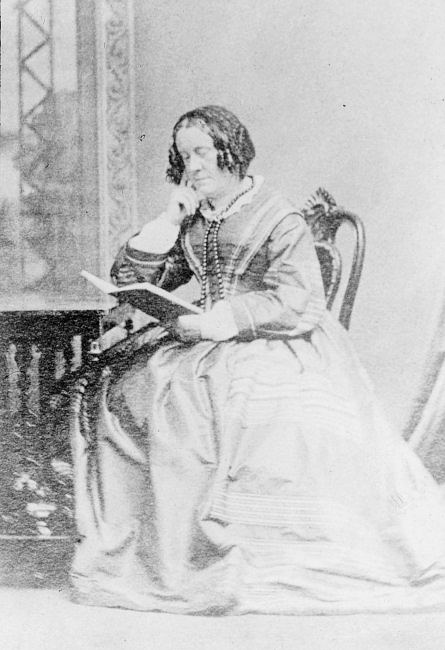Name Cecilia Brightwell | Role Author | |
 | ||
Books Lives of Labour; Or - Incidents, Memorials of the Life of Amelia, Memoir of Amelia Opie, Heroes of the Laborator, Memorials of the Early Lives and | ||
Cecilia Lucy Brightwell (1811–1875), was an English etcher and author, mostly of volumes of short biographies intended for young people .
Contents
Life
Brightwell was born at Thorpe, near Norwich, on 27 February 1811, the eldest child of Thomas Brightwell (Ipswich 1787 – Norwich 1868), and his first wife, Mary Snell (1788 – 1815), daughter of William Wilkin Wilkin, of Costessey, near Norwich, and Cecilia Lucy (Jacomb), a lineal descendant of Thomas Jacomb, ejected from St. Martin's, Ludgate. Simon Wilkin, Brightwell's uncle, edited the works of Sir Thomas Browne.
Her father, a nonconformist solicitor, mayor of Norwich in 1837, was a man of scientific tastes, a good microscopist, and contributor to many scientific journals who discovered the Asplanchna brightwellii, a species of rotifer. He published Notes on the Pentateuch (1840), a compilation, with original notes on natural history: and printed 100 copies of Sketch of a Fauna Infusoria for East Norfolk (1848). In the preparation of the latter work he was assisted by his daughter (a pupil of John Sell Cotman), who drew and lithographed the figures of the various species noted.
Brightwell, who was a good Italian scholar and a remarkably able etcher, owed little to teachers, and followed her own methods. She went little into society. Her philanthropic spirit was shown in her exertions and contribution of £180, for the Brightwell lifeboat put on the Norfolk coast at Blakeney. Her writings, many of which were published by the Religious Tract Society, were mainly biographical, and written for the young. The most important was her first work, the Life of Amelia Opie, {1854}; her father was Opie's friend and executor.
For some years before her death she was afflicted with cataract, from which her father had also suffered. She died a1 Norwich on 17 April 1875, and was buried at the Rosary Cemetery, beside her father.
Writings
Etchings
Among her published etchings were: two views of Mr. Page's house, Ely, formerly residence of Oliver Cromwell (etched in two sizes, though only the larger was published); two views of Ranworth Decoy (in Lubbock's Fauna of Norfolk); Bromeholme Priory (frontispiece to Green's History of Bacton).
A local print gives the following as a complete list of her unpublished etchings:
